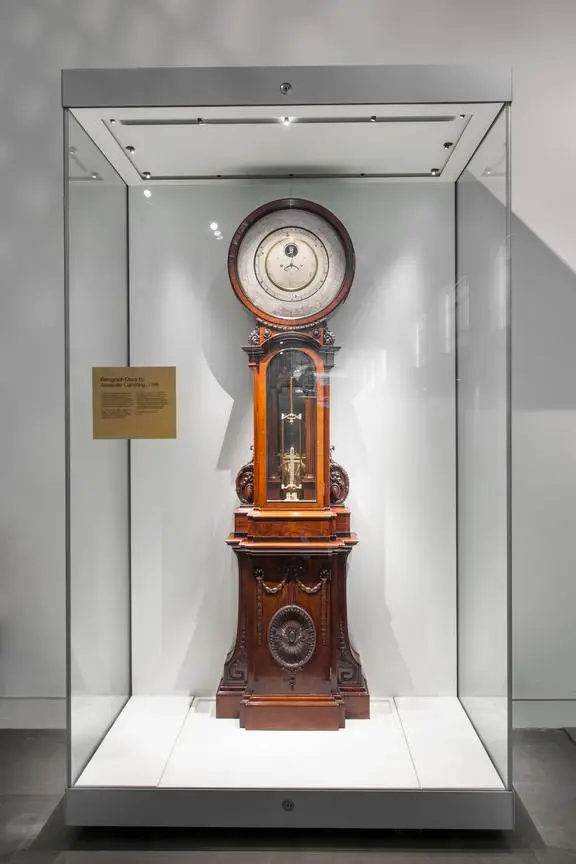
From the Science Museum website:
Barograph clock made by Alexander Cumming (1731 or 1732-1814), London, England, 1766. It consists of a compensated pendulum regulator clock and a mercury barograph mechanism for measuring changes in air pressure, which are recorded on the circular paper chart around the outside of the dial. Two tubes of mercury are concealed in the fluted wooden columns visible inside the glass trunk door. An ivory cistern and a wood and ivory pen cage run in ivory rollers connecting the pressure-measuring mechanism to the recording dial. The clock is housed in an exuberant carved mahogany case believed to be by the esteemed cabinet-maker Thomas Chippendale. Originally used by Cumming himself, the barograph clock was purchased in around 1814 and used by manufacturing chemist and meteorologist, Luke Howard (1772-1864).
From 1814 onwards, this clock was used by the famed meteorologist Luke Howard to make systematic observations that are among the world’s first urban climate studies. The clock was made in 1766 by the noted London clockmaker Alexander Cumming, three years after he completed a similar device for King George III, a prominent patron of science.